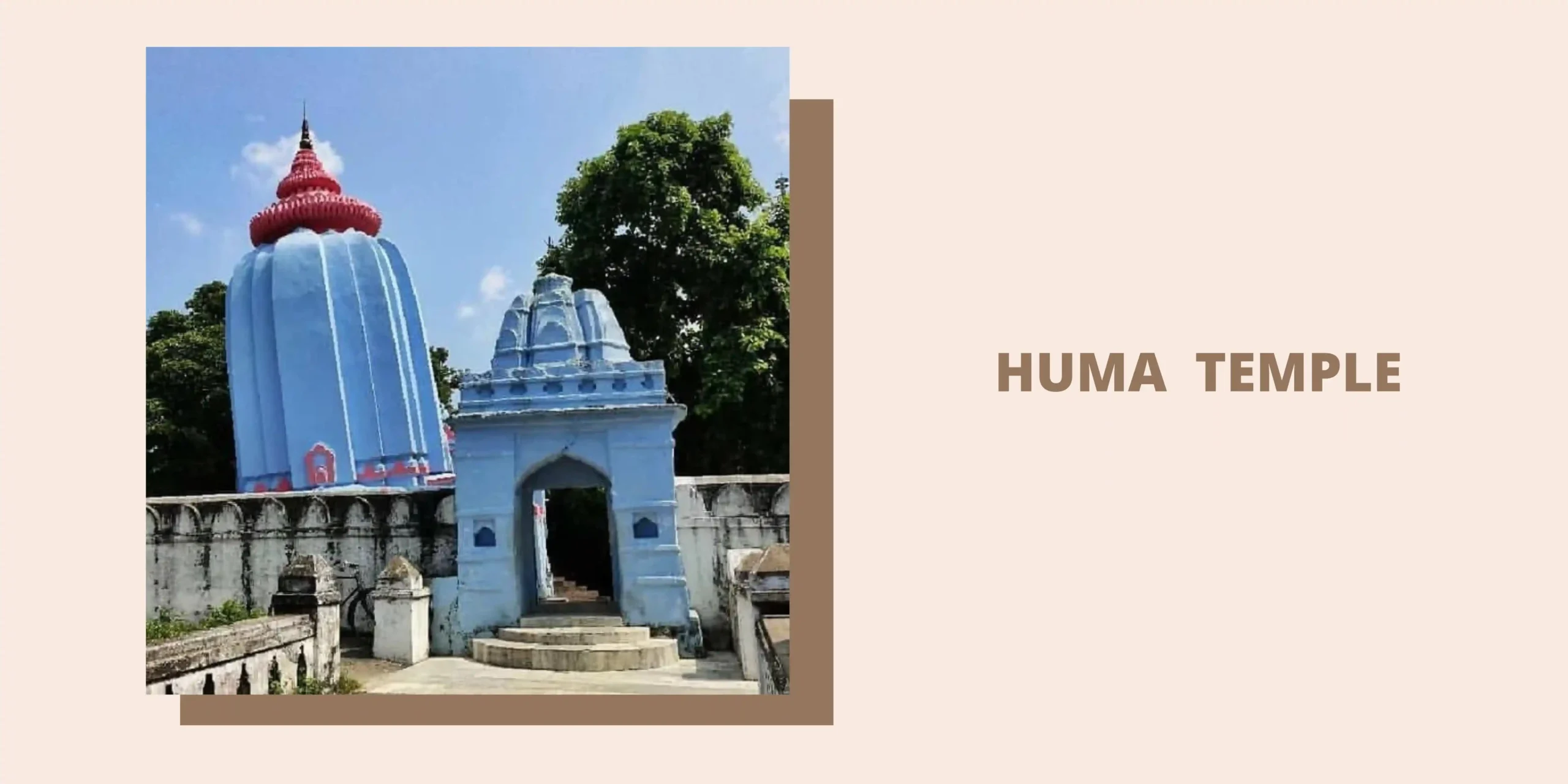Huma Temple
Huma Temple, situated in the village of Huma on the picturesque banks of the Mahanadi River, stands as a testament to Odisha’s rich cultural and religious heritage. Situated approximately 23 kilometers south of the city of Sambalpur, this ancient temple is a sacred abode dedicated to the revered Hindu deity, Lord Bimaleshwar.
| Location | Sambalpur |
| Timing | 6am-8.30pm |
| Other Attractions | Bhairavi Devi temple, Bhairo temple, mahanadi river, Kudo fish |
Huma Temple Structure
A distinctive feature of the Huma Temple is its intriguing architectural anomaly—the temple structure appears to lean, sparking curiosity and speculation about the reason behind this distinctive tilt. The precise cause of this inclination remains shrouded in mystery, and it is uncertain whether it was intentionally designed as such or if external factors influenced its posture over time.
Despite the apparent lean in its structure, a fascinating paradox unfolds when one gazes at the temple’s apex—the pinnacle steadfastly maintains a perpendicular alignment to the ground. This enigmatic feature adds to the allure of Huma Temple, leaving visitors and historians alike in awe of the skillful craftsmanship and ancient engineering marvel that defines this sacred edifice. As pilgrims and curious explorers flock to Huma, the temple continues to stand as a silent guardian, harboring its secrets within the folds of its timeless architecture.
History of Huma Temple
Constructed in the 11th-12th century by Ganga king Aanangabhima-3, Huma Temple underwent a significant transformation in the late 17th century. The credit for the construction of the present temple goes to the 5th Chauhan King, Baliar Singh. Subsequently, during the 18th century under the rule of King Ajith Singh, the temple experienced further expansion with the addition of various structures. This gradual evolution, spanning different centuries and rulers, has shaped Huma Temple into a symbol of historical and cultural significance.
Story behind this Temple
In the ancient tales, a devoted milkman undertook a daily pilgrimage across the flowing waters of the Mahanadi to pay homage to Lord Shiva. His ritual involved presenting milk to the stone deity of Shiva, a sacred rock idol believed to miraculously consume the offering each day. This revered place of worship is presided over by the divine presence of Bimaleswar Siva at the Huma Temple.
Kudo fish
In the Mahanadi of this region, there exists a unique species of fish known as the ‘Kudo’ fish. These remarkable creatures are renowned for their gentle nature, willingly accepting sweets and other offerings from those who bathe near the temple. On auspicious occasions, they are affectionately addressed by their names and presented with the sacred ‘prasad’ of the deity. Interestingly, the local belief holds that these fish are divine assets and, as such, are not pursued or caught by anyone, acknowledging their sacred status in connection to the temple’s divine presence.

